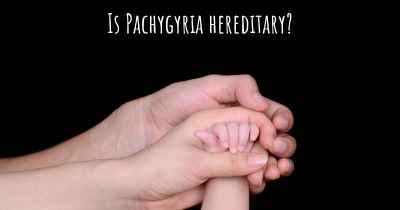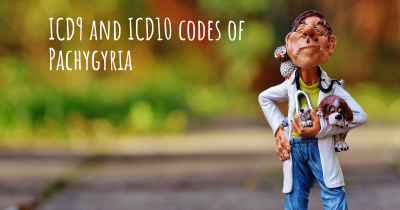What is the history of Pachygyria?
When was Pachygyria discovered? What is the story of this discovery? Was it coincidence or not?

Pachygyria is a rare neurological disorder characterized by abnormal brain development, specifically in the cerebral cortex. The condition is present at birth and is typically caused by genetic mutations or disruptions during fetal brain development. Pachygyria is often associated with other brain abnormalities and can lead to various cognitive and physical impairments.
Historical Background:
The history of pachygyria dates back to the late 19th century when advancements in medical science allowed for the detailed study of brain anatomy and pathology. However, it wasn't until the mid-20th century that pachygyria was recognized as a distinct condition.
In 1954, a renowned neuropathologist named Norman Geschwind described a case of pachygyria in a young child. Geschwind's observations and subsequent research shed light on the structural abnormalities in the cerebral cortex associated with the disorder. His work laid the foundation for further investigations into the causes and effects of pachygyria.
Causes and Genetic Discoveries:
Over the years, scientists have made significant progress in understanding the genetic basis of pachygyria. They have identified several genes that, when mutated, can lead to abnormal brain development and the manifestation of pachygyria.
One of the key genes associated with pachygyria is LIS1 (also known as PAFAH1B1). In the early 1990s, researchers discovered that mutations in the LIS1 gene were responsible for a severe form of pachygyria called lissencephaly. This groundbreaking finding provided crucial insights into the molecular mechanisms underlying brain development and paved the way for further genetic studies.
Subsequent research led to the identification of other genes involved in pachygyria, including TUBA1A, DCX, and ARX. These genes play essential roles in neuronal migration, a critical process during brain development. Mutations in these genes disrupt the normal migration of neurons, leading to the formation of abnormally thick gyri (pachygyria) or smooth brain surfaces (lissencephaly).
Diagnostic Advancements:
Advancements in medical imaging techniques have greatly improved the diagnosis and understanding of pachygyria. Magnetic Resonance Imaging (MRI) has become an invaluable tool for visualizing the brain's structure and identifying abnormalities associated with pachygyria.
With the help of MRI, healthcare professionals can accurately assess the extent and severity of pachygyria, enabling them to provide appropriate medical interventions and support. Early diagnosis is crucial for implementing early intervention strategies and optimizing patient outcomes.
Current Research and Treatment:
Presently, there is no cure for pachygyria, and treatment primarily focuses on managing the symptoms and providing supportive care. Physical therapy, occupational therapy, and speech therapy are often recommended to address motor and cognitive impairments.
However, ongoing research aims to develop targeted therapies that can potentially correct the underlying genetic mutations or promote normal brain development. Gene therapy, stem cell therapy, and pharmacological interventions are among the areas of active investigation.
Conclusion:
Pachygyria is a complex neurological disorder with a rich history of scientific discovery and medical advancements. From its initial recognition as a distinct condition to the identification of causative genes and diagnostic improvements, our understanding of pachygyria has significantly evolved.
While there is still much to learn about this condition, ongoing research offers hope for improved treatments and interventions that can enhance the lives of individuals affected by pachygyria.








